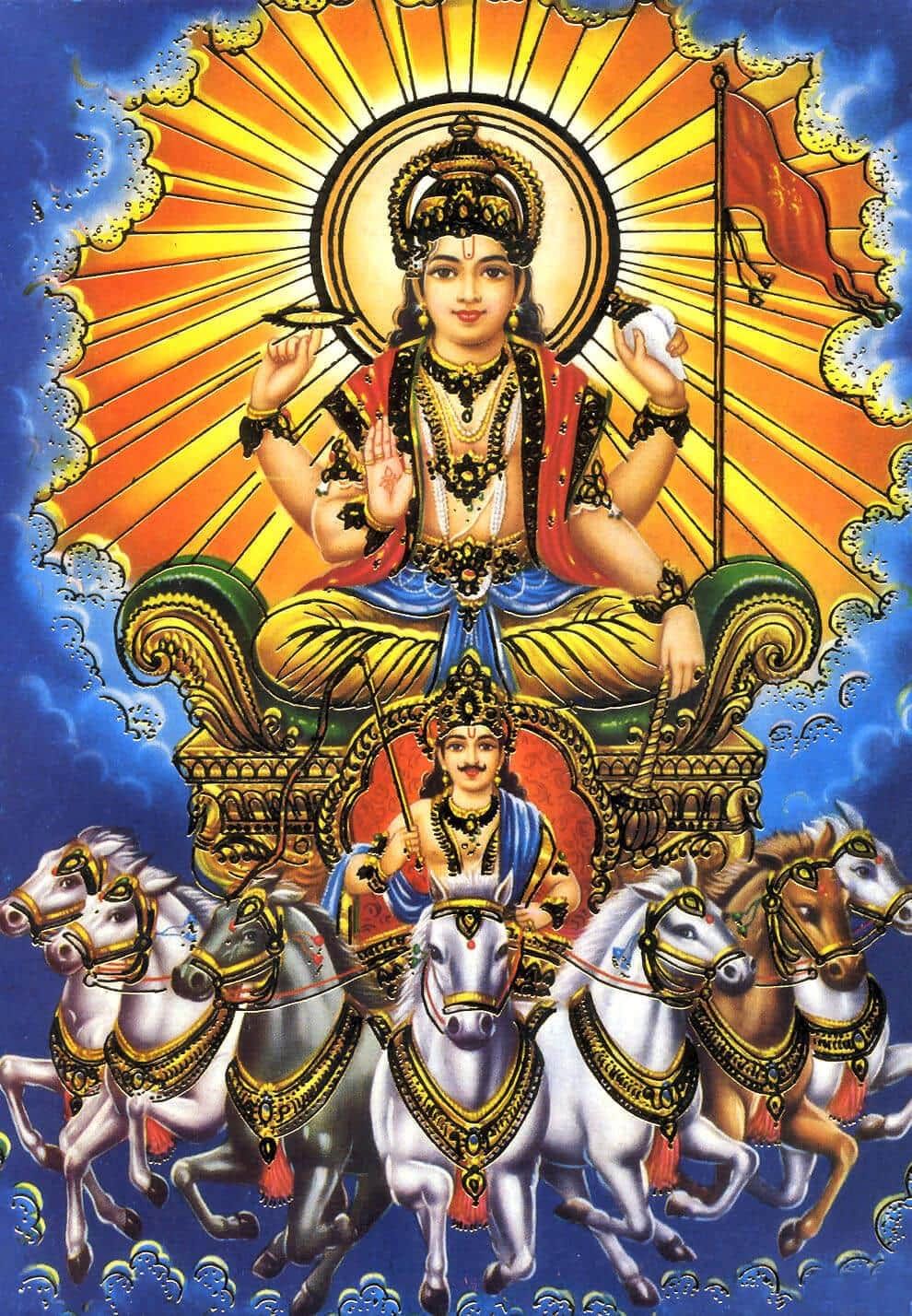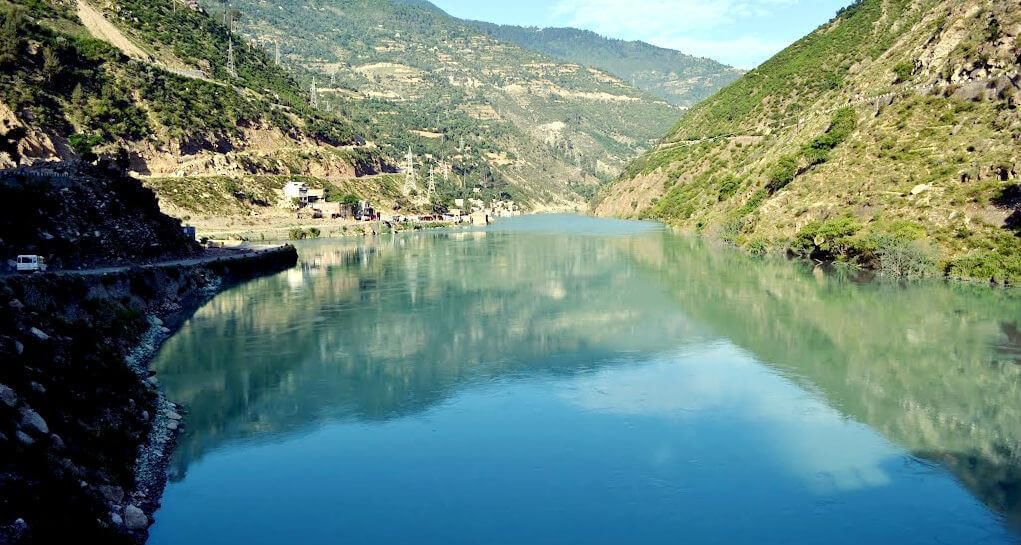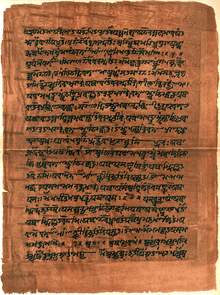Vedic Culture (Part - 2) | Additional Study Material for UPSC PDF Download
Vedic Sun gods
(I) Savitri
(II) Vishnu Urukrama
(III) Savita. Vedic Sun God
Vedic Sun God
- Kalpa Vedangas contains the Grihya and the Dharma Sutras.
- In the Vedic homes the fire was kept burning continuously because it was—(I) Personification of sacrificial fire; (II) Second in importance to Indra; (III) Messenger between the gods and devotees.
Vedic family—
(I) The basic unit of the Aryan tribal society was the patriarchial family;
(II) The birth of a son was especially welcome, for the son’s presence was essential at important ceremonies;
(III) The sanctity of marriage had been recognised and the tie of marriage was a binding force all through life.
- The term niyoga, with reference to women, stand in the Vedic society for cohabitation of a childless widow with her husband’s brother until the birth of a son.
- The word dampati, used in the Rigvedic period, designates mistress as well as master of the house.
- The most common crime-mentioned in the Rigveda was cattle-lifting.
- The staple food of the Vedic Aryans was barley and rice.
- The name Aghnya (not to be killed) mentioned in many passages of the Rigveda, applies to cows.
- The Jana during the Vedic period refers to tribe.
- The sage, who is said to have Aryanised South India, was Agastya.
- In the Vedic period the people called Pani were those who controlled trade.
- The four-fold division of society is mentioned in Purusa-sukta of Rigveda.
- The term dvija (twice born) in the Vedic period referred to Brahmanas, Kshatriyas and Vaishyas.
- The vedic god incharge of right, truth and moral order (rita) was Varuna.
- The earliest Iron Age occupation in India has been associated with Painted Grey Ware.
- Gayatri mantra is addressed to savitri.
- In the Atharvaveda, the two popular Vedic bodies (the Sabha and Samiti) have been called as the twin daughters of Prajapati (the creator).
- In the Vedic period, the institution of kingship was created as a result of national insecurity due to absence of a leader.
- The famous Vedic saying, “War beings in the minds of men”, is stated in the Atharvaveda.
 AtharvavedaThe Vedic conception of life after death is—(I) Life after death was envisaged in terms of punishment for evil and reward for excellence or goodness; (II) Sinners went to the House of Clay, and the pious to be rewarded to the World of the Fathers; (III) In some of the later hymns there is a hint of metempsychosis.
AtharvavedaThe Vedic conception of life after death is—(I) Life after death was envisaged in terms of punishment for evil and reward for excellence or goodness; (II) Sinners went to the House of Clay, and the pious to be rewarded to the World of the Fathers; (III) In some of the later hymns there is a hint of metempsychosis. - A Rigvedic Painted Grey Ware site excavated recently in haryana is Bhagwanpur.
Important Facts
Four Noble Truths
- The world is full of sorrow.
- Desire is the cause of sorrow.
- If desire are conquered, all sorrows can be removed.
- Desire can be removed by following the eight fold path.
Eight Fold Paths
- Right understanding
- Right thought
- Right speech
- Right action
- Right livelihood
- Right effort
- Right mindfulness
- Right concentration
Famous Bhikshus of the Time of Buddha
- Sariputta, possessed the profoundest insight into the dharmma.
- Moggalana, had the greatest super-natural powers.
- Ananda, the devoted disciple and constant companion of the Buddha.
- Maha Kassapa, the President of the Buddhist Council held at Rajagriha.
- Anuruddha, Master of right mindfulness.
- Upali, master of vinaya, and Rahul, the Buddha‘s son.
 Upali Buddha Statue
Upali Buddha Statue - In the Mahayana Buddhism, the Bodhisattva Avalokitesvara was also known as Maitreya.
| Authors | Books |
| Megasthanese | Indica |
| Kautilya | Arthasastra |
| Panini | Ashtadhyayi |
| Patanjali | Mahabhasya |
| Charaka | Charaka Samhita |
| Aryabhatta I | Aryabhattiya |
| Varahmihira | Pancha Siddhantika, Brihat Samhita |
| Brahmagupta | Brahmasphuta Siddhanta, Khanda Khadyaka |
| Bhaskara II | Siddhanta Shiromani, Lijawati |
| Amarsimha | Amarkosa |
| Ashvaghosha | Buddhacharita, Saundarananda |
| Kalidasa | Kumarasambhava, Raghuvamsha, Malavikagnimitra, Vikramorvasiya, Abhjinanashakuntala, Meghaduta |
| Banabhatta | Harshacharita, Kadambari |
| Harshavardhana | Ratnavali, Priyadarsika, Nagananda |
| Bharavi | Kiratarjuniya |
| Bhatti | Bhatikavya or Ravanavadha |
| Kumaradasa | Janakiharana |
| Magha | Shishupalavadha |
| Sri Harsha | Naishadhacharita |
| Bhasa | Pratima, Abhisheka, Karnabhara, Svapnavasavadatta, Charudatta, Pancharatra |
| Sudraka | Mricchakatika |
| Bhavabhuti | Mahaviracharita, Malatimadhava, Uttararamacharita |
| Bhartrihari | Sringarashataka, Nitishataka, Vairagyashataka |
| Amaru | Amarushataka |
| Bilhana | Chaurapanchashika, Vikramankadevacharita |
| Jayadeva | Gitagovinda |
| Dandin | Dashakumarcharita |
| Kalhana | Rajatarangini |
| Rajashekhara | Vidhasalabhanjika, Kavyamimansa, Bala Ramayana, Balabharata, Karpuramanjari |
| Somadeva | Katha Saritsagar |
| Vishnu Sharma | Panchatantra |
| Gunadhyay | Brihata Katha |
| Vatsyayan | Nyayabhasya |
| Mahendraverman | Mattavilasa |
| Amoghavarsa I | Kaviraja Marga |
| Virsena | Navratna |
| Visakhadatta | Mudrarakshasa |
| Kshemendra | Brihatkathamanjari |
| Vakpati | Gaudavaho |
| Sandhyakaranandin | Ramapalacharita |
| Subandhu | Vasavadatta |
| Narayana Pandita | Hitopadesha |
| Hala | Gathasaptashati |
| Vidyapati | Kirtilata |
| Narapati Nalha | Bisaldeva Raso |
| Chanda Baradai | Prithviraja Raso |
- The tax which the kings used to collect from the people in the Vedic period wa s ca lled Bali.
- Various social rituals and the perf ormance of several ceremoni es or sams karas from conception to cremation have been described in the Grihya-Sutras.
- A branch of Vedic science, which has been highly appreciated and revived by the modern scientists recently, is Vedic Mathematics.
- The system of taxation and revenue administration in the Later Vedic period—(I) Settled life and stable agriculture led to the production of surplus which could be collected by the king in the form of taxes; (II) The king received regular contributions from the people in the shape of bali and shulka; (III) an official called bhagadugha collected the royal share of the produce.
Administrative system of the Later Vedic period—(I) On account of an assured income from the taxes the king could appoint many officers; (II) We hear of twelve ratnins, the forerunner of the latter day council of ministers; (III) The beginning of a regular system of provincial government may be traced in references to the sthapati and the shatapati.
- Later Vedic officials—
- (a) Samagrahitri—Treasurer
- (b)Bhagadugha—Collector of taxes
- (c) Kshattri—Village Officials
- (d) Akshavapa—Superintendent of gambling
- (e) Adhikrita—Superintendent of Police
Judicial system of the Later Vedic period—(I) The king played a very large part in the administration of justice;
(II) Certain cases were referred to the tribe for adjudication, and the judicial work of the tribal assembly was entrusted to a small body of sabhasadasor assessors; (III) Civil cases were sometimes decided by arbitration.
Rivers According to their ancient names:

 Chenab river
Chenab river
Propounders of the Schools of Indian Philosophy

- Gramani was also known as the ‘king maker’ (raja-kartri).
- Like the Vedic Aryans the custom of sacrificial fire was also followed by the ancient Iranians.
Mauryan provinces and their capitals
A . Uttarapatha— Tax ila (Northern Province)
B . Avantiratha— Ujjain (Western Province)
C. Dakshinapatha— Suvarnagiri (Southern Province)
D. Prachya— Tosali (Eastern Province)
E. Central Province— Pataliputra
The Rigvedic concept of Rita denotes the (I) Cosmic order or law prevailing in nature (II) Ethical and moral order.
- The ‘Wedding Hymn’ describing the oldest marriage ritual is found in the Rigveda.
- The most well-known variety of gr ain grown by the Vedic Arya ns was kn own as Yava.
- In the Rigveda the term duhitri used for the daughter literally means the milker of the cow.
|
20 videos|561 docs|160 tests
|
FAQs on Vedic Culture (Part - 2) - Additional Study Material for UPSC
| 1. What are the major religious texts associated with Vedic culture? |  |
| 2. How did the Vedic culture influence social and political structures in ancient India? |  |
| 3. What were the main rituals and sacrifices performed in Vedic culture? |  |
| 4. How did the Vedic culture contribute to the development of art and literature in ancient India? |  |
| 5. What were the main principles of morality and ethics in Vedic culture? |  |
|
20 videos|561 docs|160 tests
|

|
Explore Courses for UPSC exam
|

|




















